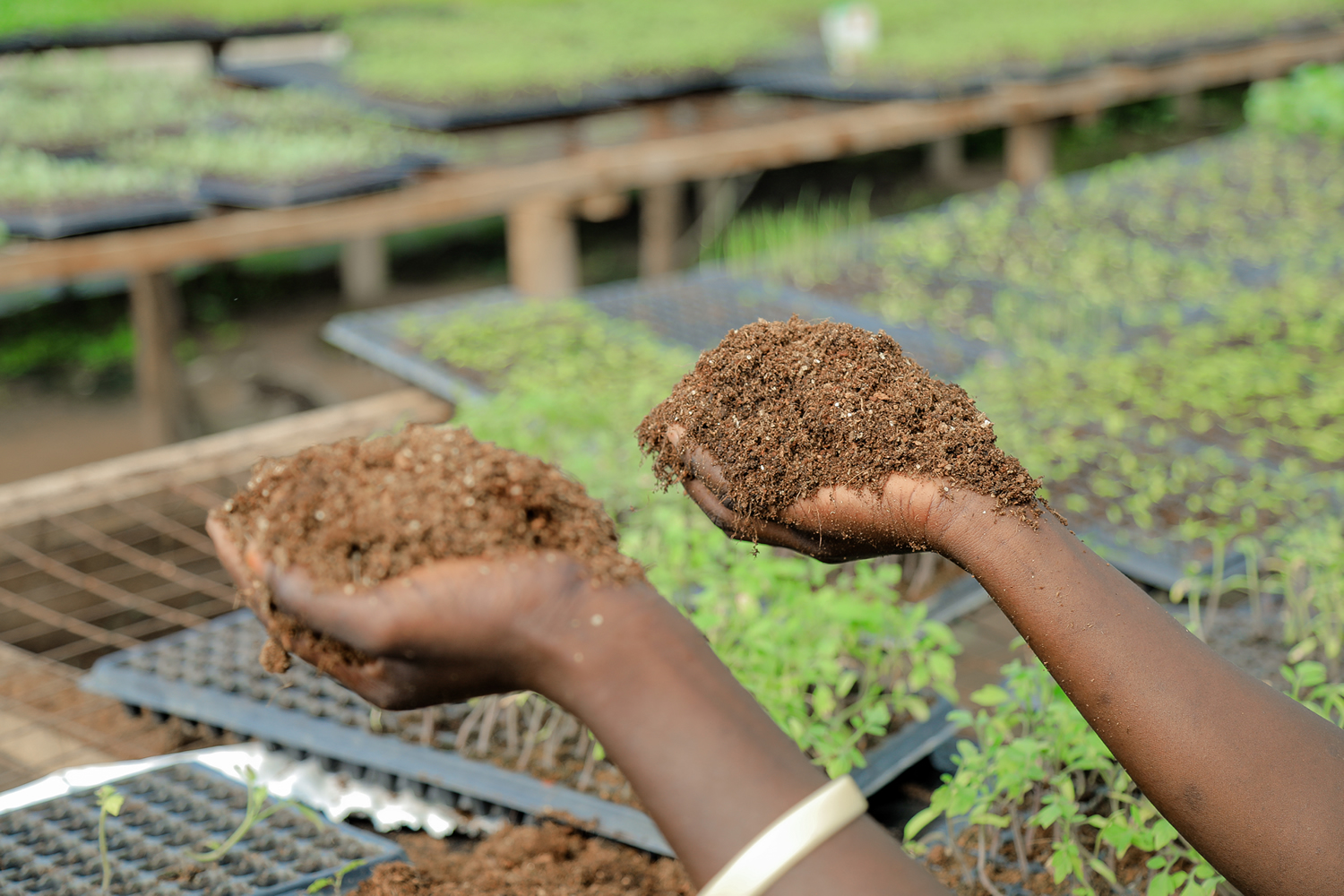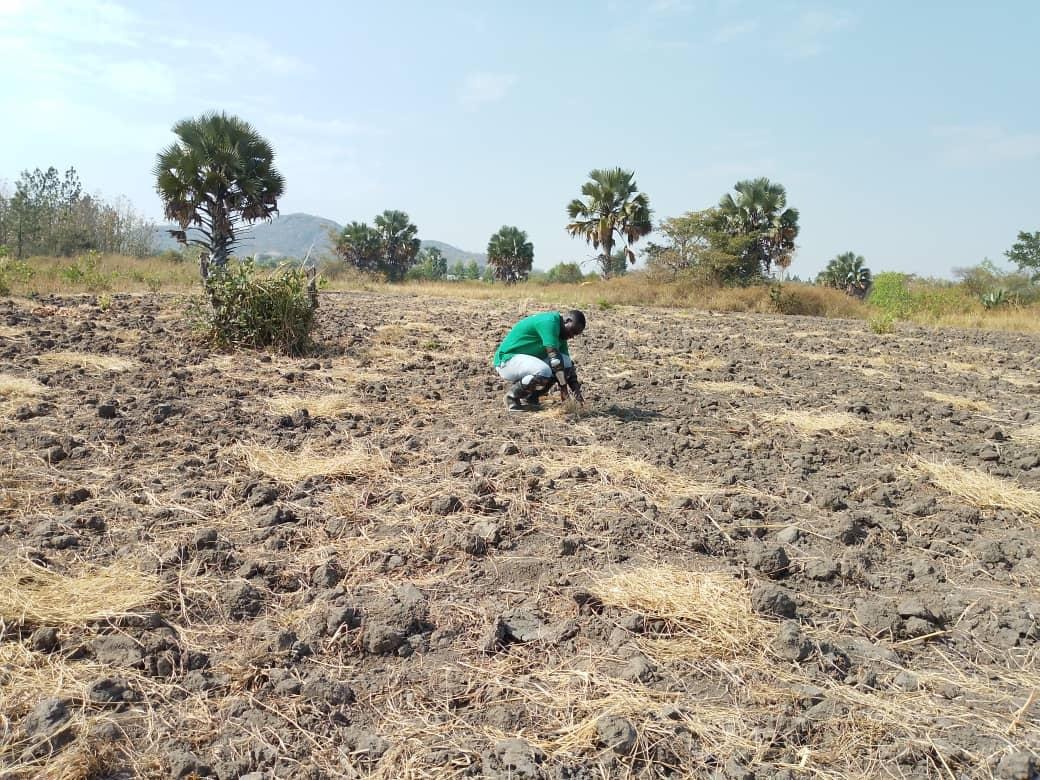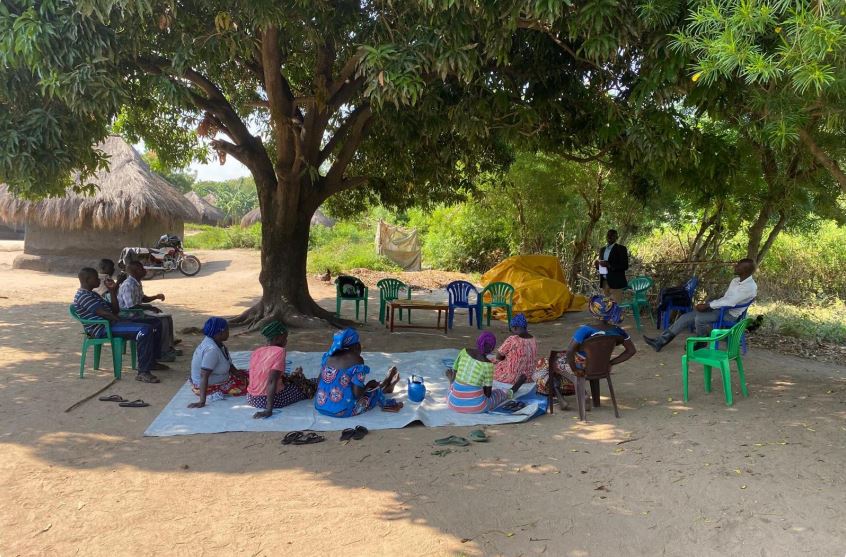Soil Testing: The Pathway to Soil Fertility
Soil Testing: The Pathway to Soil Fertility

Healthy soil is the foundation of successful agriculture. As soil quality declines, farmers see smaller harvests, higher costs, and shrinking profits. In today’s agriculture, soil testing is a vital tool for managing fertiliser application and improving crop production. Without it, farmers guess at what their land needs, wasting resources and harming the environment.
A while ago, I reached out to Razak Omia, the CEO of Omia Agribusiness Development Group. Razak is not your typical CEO-no suit and tie here, just a guy in a green Omia branded shirt juggling tasks. I asked him to moderate a conversation on soil testing, and for good reason. His agribusiness has worked with over 49,000 farmers in West Nile, Acholi, and Central Uganda.
“Many farmers continue to blindly apply fertilizer without knowing what’s in their soil,” Razak says. “They end up with low yields, despite pouring in hard-earned money, while the soil pH shifts under their feet.” At Omia Agribusiness, he has integrated soil testing into the services offered.

“With soil testing, farmers understand the exact nutrient levels in their soil, organic matter content, soil pH and other key parameters. This data enables them to precisely determine the type of crops to grow, what fertilisers to use, how much organic matter to apply and generally determine what soil amendments they can adopt.”
As someone involved in agriculture and interacting with farmers daily, I have seen first-hand how soil testing transforms farming outcomes. Many farmers assume that their land is fertile simply because crops continue to grow, but declining yields tell a different story. Razak moderated the conversation on soil testing, with over 600 participants listening in and sharing experiences. We heard from farmers, businessmen and women speaking to the misconceptions surrounding soil health. Farmers who had tested their soils and utilised the results reported significant improvements in crop production, while those who hadn’t, spoke of their recurring productivity challenges.
One farmer, Ratibu Lomo, from Dranya Village in Koboko, said he has never done soil testing because he does not know where to get the test done. He also does not know how much it costs but he fears that it might be too expensive. Asked if he would do soil testing if the service were brought closer to him and made affordable, he says
“Yeah, but affordability will vary. Affordable to you might not be affordable to me. But if I can afford it, Yeah!”

Soil testing provides essential information to help farmers make informed decisions that improve their soil’s health and increase crop yields. It offers numerous benefits, such as identifying nutrient deficiencies, optimising fertiliser use, and ensuring sustainable soil management leading to increased yields, better resilience and money in farmers pockets. But, despite these advantages, adoption rates remain low due to several constraints, including limited awareness, high costs, and inadequate access to soil testing facilities. Overcoming these barriers is essential to improving soil fertility and ensuring long-term agricultural sustainability in the region.

This Market study commissioned by CSJ on soil testing uptake in Northern Uganda gave me pause for thought. It revealed several critical insights highlighting the low uptake of soil testing services among Smallholder Farmers in Northern Uganda including:
- Many farmers still hold the belief that Northern Uganda’s soils are naturally fertile, reducing the perceived need for inorganic fertilisers. Some believe that inorganic fertilisers degrade soil quality.
- Traditional farming practices persist, even as yields decline, due to a lack of awareness about modern soil management techniques.
- Farmers who had tested their soils prioritised seasonal crops like maize, beans, and cassava, with a growing interest in high-value crops such as fruits and vegetables.
- Mobile soil testing kits and precision agriculture tools, such as Virtual Agronomist, have improved accessibility at the sub-county level.
- Bundling soil testing services with agro-inputs and market access incentivises smallholder farmers to adopt soil health practices.

From these findings, the key recommendations I picked up on were:
- Hosting practical demonstrations to show soil as a living system that requires regular nutrient replenishment can reinforce the importance of sustainable farming among smallholder farmers.
- Exploring affordable and cost-effective soil testing methods/options and precision agriculture technologies can make services more accessible.
- Raising awareness about the benefits of soil testing will encourage adoption and reduce reliance on traditional, ineffective methods.
- Farmers are more likely to adopt soil testing when it is directly linked to fertiliser application for crops such as vegetables, fruits, coffee, cocoa and annual crops like Maize etc.
- Bundling soil testing with agro-inputs and market access for the produce can incentivise Smallholder Farmers to invest in soil health.
- Providing clear data on the return on investment for soil testing will motivate farmers to prioritise soil health.
- Farmers need actionable, easy-to-understand instructions for soil management.
- Collaborating with financial institutions can help fund soil testing initiatives and provide affordable solutions for Smallholder Farmers.

- Soil testing remains a fundamental step in restoring and maintaining soil health. Relevant stakeholders, including agricultural experts, policymakers, development actors, financial institutions, agribusinesses and others, must work together to design models that will make soil testing services more accessible and affordable for smallholder farmers.
- Key factors driving Smallholder Farmers investment in soil testing include accessibility to the service, cost-effectiveness, technical support, and quick turnaround times for results that help them to make quick decisions. Addressing the existing knowledge gaps will encourage farmers to prioritise soil health, leading to improved productivity, sustainability, and resilience in Northern Uganda’s agricultural sector.
- By adopting soil testing, farmers can ensure better yields, reduce input costs, and contribute to a healthier environment making it a win-win solution for both agrimarkets and food security.


